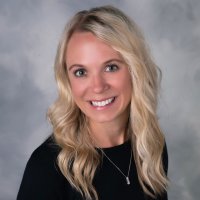Enrollment for the respiratory care program is limited to 40 students. There is no limit for enrollment in the pre-respiratory care program.
The respiratory care program holds continuing accreditation with the Commission on Accreditation for Respiratory Care (CoARC).
CoARC accredits respiratory therapy education programs in the United States. To achieve this end, it utilizes an "outcomes-based" process. Programmatic outcomes are performance indicators that reflect the extent to which the educational goals of the program are achieved and by which program effectiveness is documented. Program outcomes data is available on CoARC.
Labor department statistics major growth in the health care industry and the report on respiratory therapy should really put wind in the sails of potential respiratory therapists.
South Dakota’s health care industry is projected to be among the largest growth industries through 2028, according to the Labor Market Information Center within the South Dakota Department of Labor and Regulation. The industry is projected to add 6,472 workers to the state’s economy between 2018 and 2028. The rate of growth is projected to be 11.3%, much faster than the 7.1% projected for all industries. Further information on employment trends and average salary are available online.
You will also have access to seminars and conferences, like the South Dakota Society for Respiratory Care (SDSRC). You can build your resume and network with potential employers by sitting on the SDSRC board of directors as a student representative. In addition, SDSRC offers scholarships and opportunities to attend the American Association for Respiratory Care conferences.
Students complete their second professional year at Monument Health in Rapid City, S.D., or Avera McKennan Hospital in Sioux Falls, S.D., Sanford USD Medical Center in Sioux Falls, S,D., Huron Regional Medical Center in Huron, S.D., Madison Regional Health System in Madison, S.D., or Brookings Health System in Brookings, S.D.
Students will develop skills and master concepts in:
- Patient assessment
- Neonatal care
- Hemodynamic analysis
- Ventilator management
- Emergency and trauma
- Pulmonary diagnostic testing
- Disease management
- Respiratory pharmacology
Students in the respiratory care program are exposed to advanced technology and the latest respiratory equipment, including:
- Ventilators
- Ultrasound
- Blood analyzing machines
- Medical charting systems
BREATHE-SD is an HRSA grant-funded project focused on increasing and strengthening the respiratory care and public health workforce in South Dakota.
Through BREATHE-SD, half-tuition scholarships are available to students pursuing an A.S. in respiratory care at SDSU. All A.S. degree requirements also count toward the B.S. in respiratory care.
There is no separate application for the BREATHE-SD scholarship. Students simply need to apply to the A.S. in respiratory care program and they will be automatically considered for the half-tuition BREATHE-SD scholarship.
Avera Health, Monument Health, Sanford Health and SDSU, partnering with the Northern Plains Health Network, are each providing unique incentives including scholarships, sponsorships and sign-on bonuses for those wanting to become a respiratory therapist.
For more information, contact:

Lacy Patnoe
Director of Respiratory Care/Instructor
Department of Allied and Population Health
Respiratory Care

